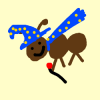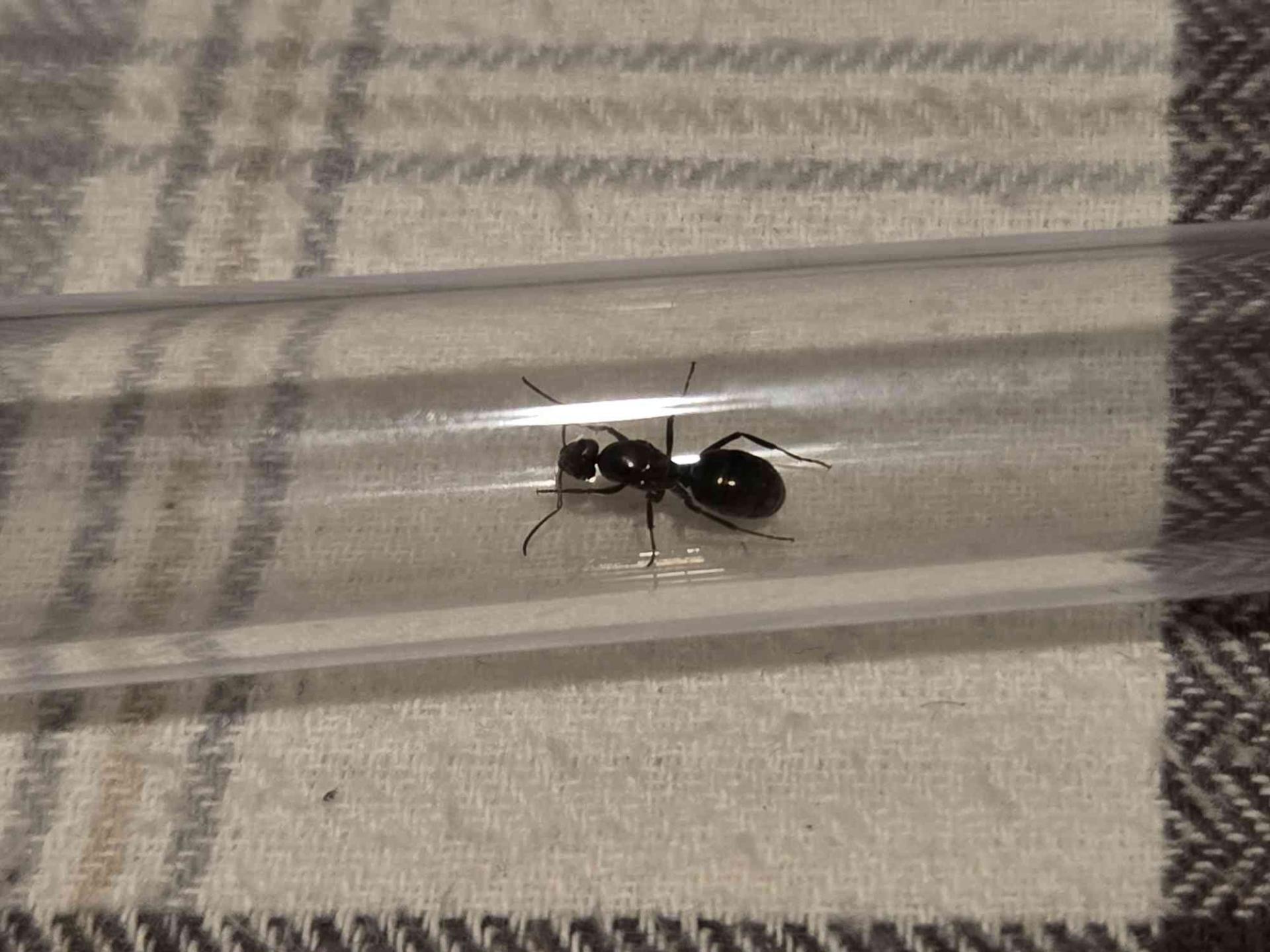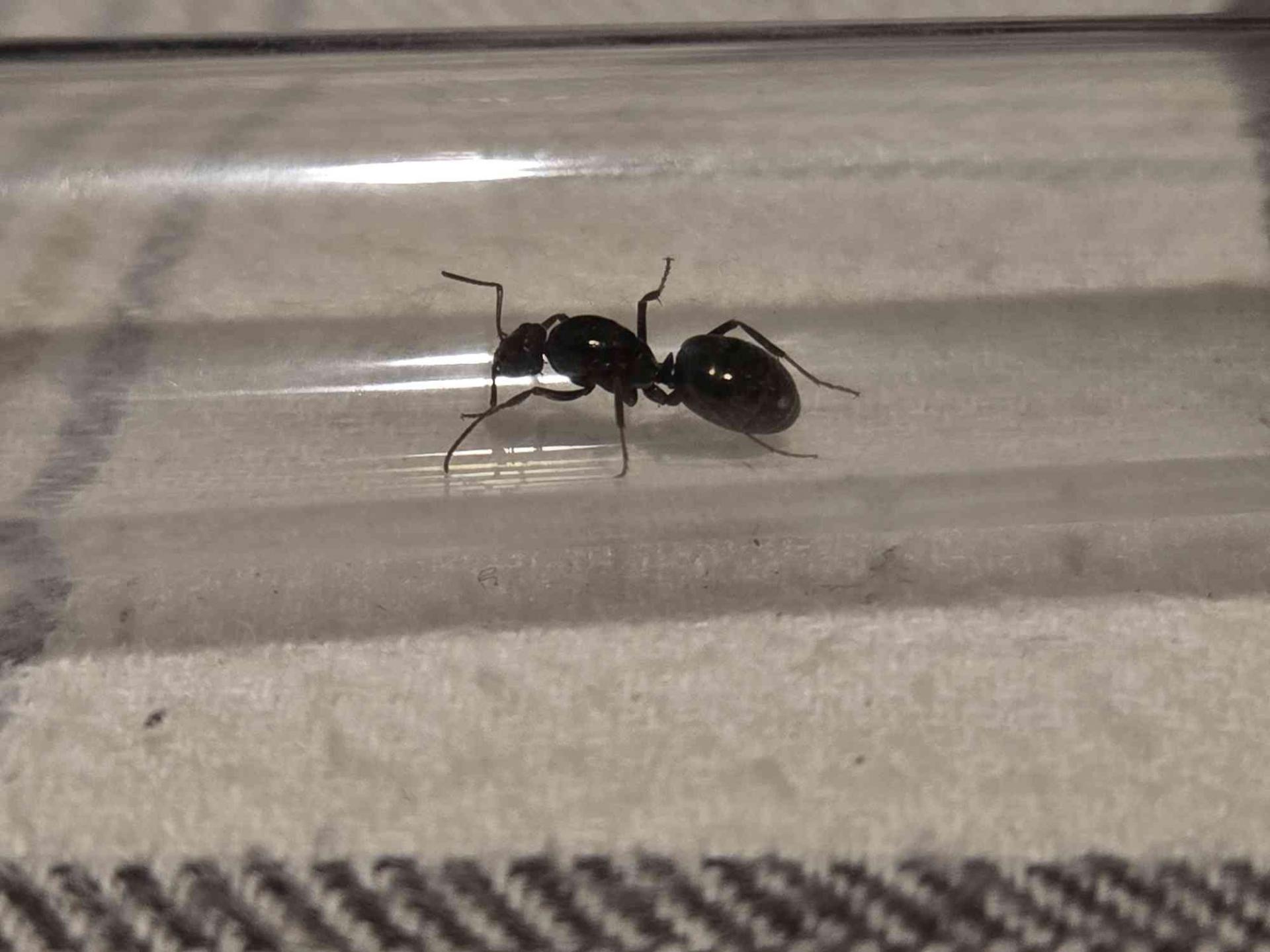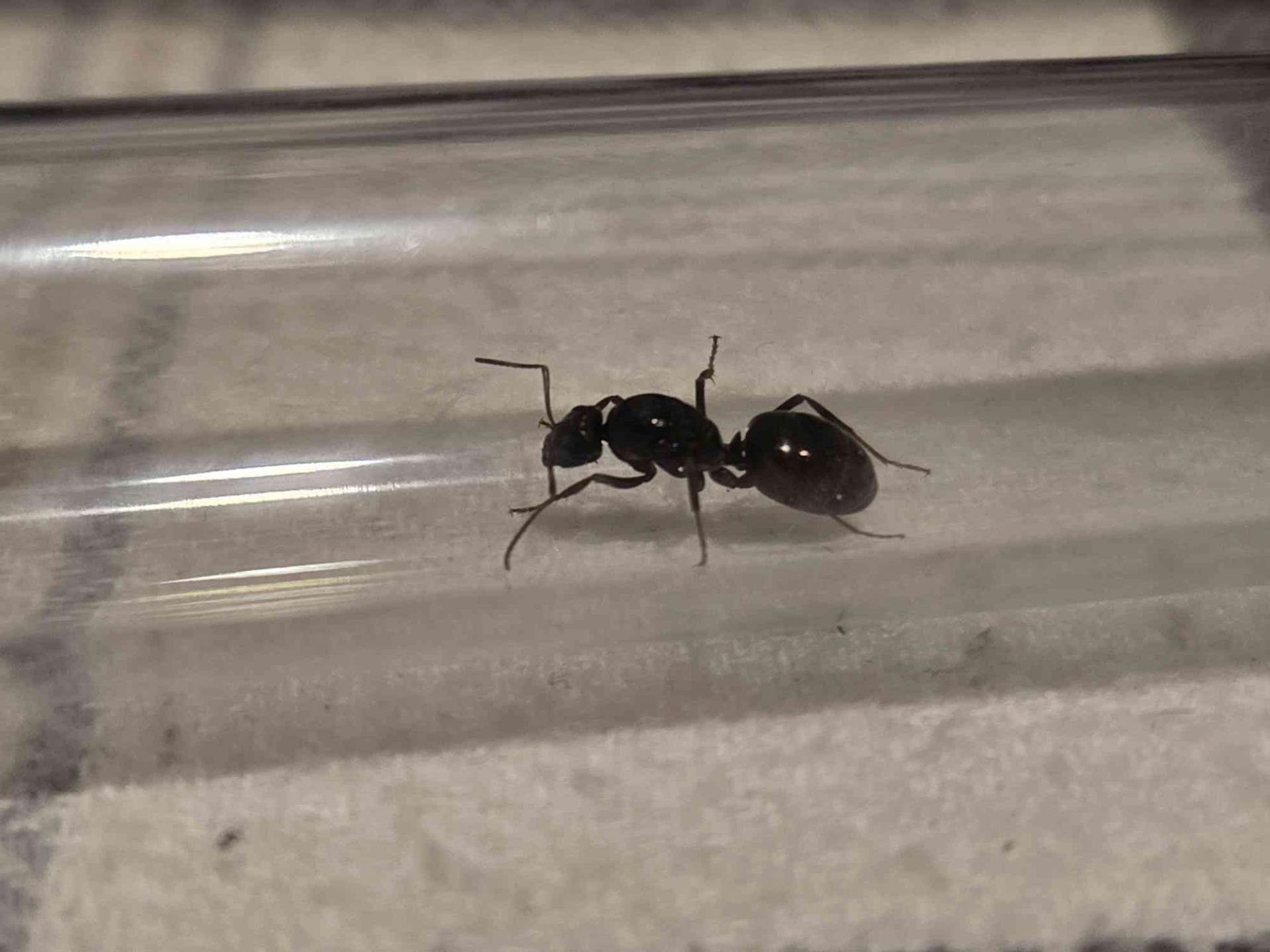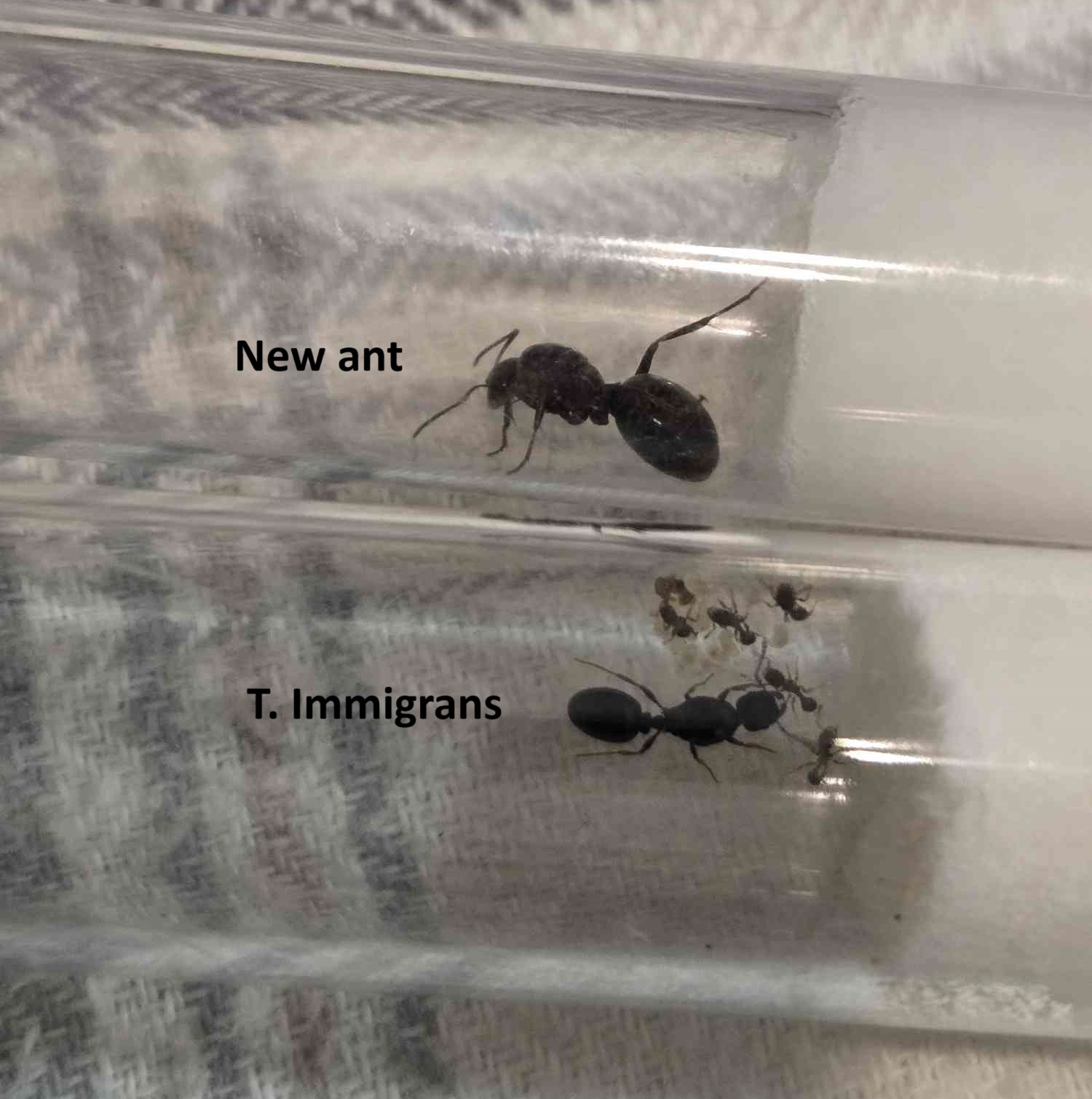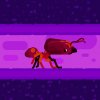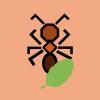1. Queen ant was caught in the city of Spokane in a neighborhood environment. Found on a pavement sidewalk.
2. August 18th around 7pm, an hour or so before sunset. It was about 85 degrees fahrenheit
3. Found on a sidewalk in a neighborhood environment.
4. I unfortunately do not have a way of precisely measuring her, but I've included a reference image showing her next t a T. Immigrans queen I caught a month or two ago.
5. Appears just dark black or brown to me.
6. She seemed to have some maybe long hairs or something coming off the bottom of her head. I'm not super familiar with ant body terminology so I'm not sure what to call them.
7. She was a whole lot quicker than the T. Immigrans I caught a month or so ago, but that may just be relative because of her size.
8. I was unable to locate the nest she was from.


